In: American photography
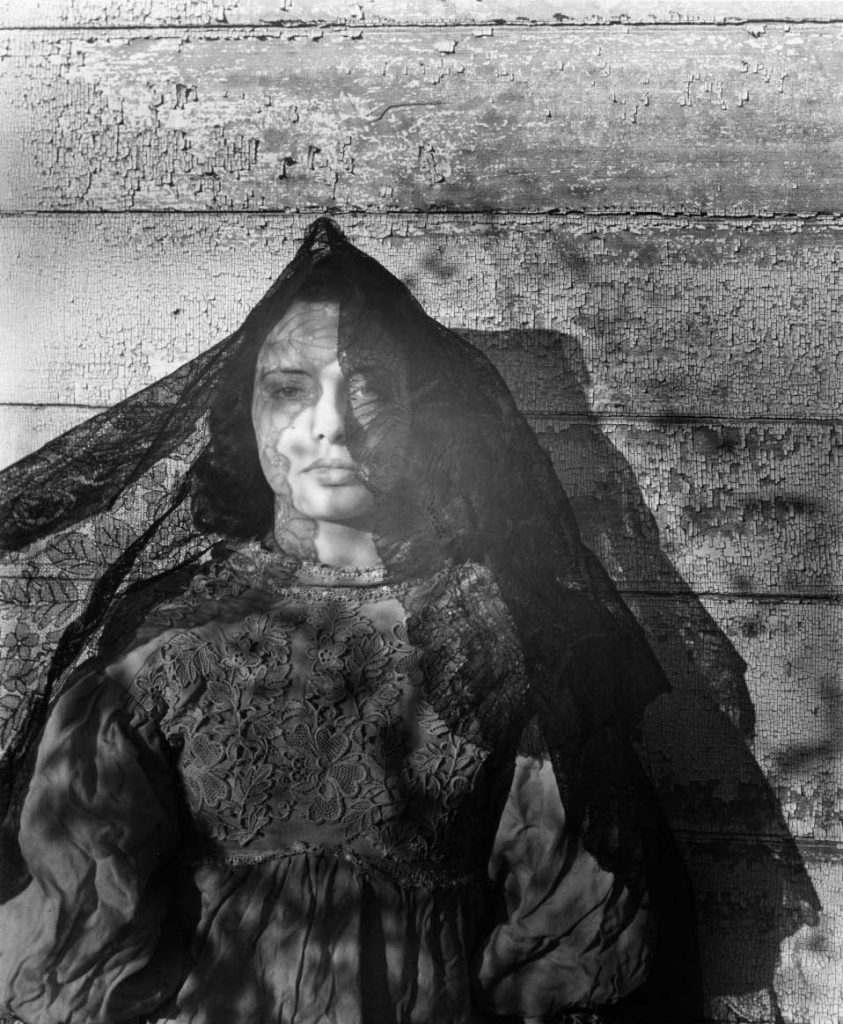
Clarence John Laughlin | Southern Gothic
March 12, 2024Clarence John Laughlin (1905 – 1985) | Southern Gothic
Laughlin was a New Orleans photographer : he’s best known for his black and white, sometimes uncanny and disquieting images of the Southern United States. Considering the ethereal and dream like quality of many of his scenes, he’s sometimes spoken of as the father of American Surrealism. In considering his photographs, the ‘original’ definition of Surrealism from André Breton was to “resolve the previously contradictory conditions of dream and reality into an absolute reality, a super-reality.” Less pretentiously (Frida Kahlo did refer to Breton as being among the ‘art bitches’ of Paris, whom she disdained, ahem), in the work of Laughlin, one can see that he was attempting to both re interpret and define his own memories and experiences of a site, while also employing the place and people within it, that is rife with contested narratives.
I tried to create a mythology from our contemporary world. This mythology — instead of having gods and goddesses — has the personifications of our fears and frustrations, our desires and dilemmas.
(Clarence John Laughlin)
For those unfamiliar : ‘Southern Gothic is an artistic subgenre…heavily influenced by Gothic elements and the American South. Common themes of Southern Gothic include storytelling of deeply flawed, disturbing, or eccentric characters who may be involved in hoodoo [or the large sphere of the occult], decayed or derelict settings, grotesque situations, and other sinister events relating to or stemming from poverty, alienation, crime, or violence.’ (from here)
As darkness set in, the mist drifted off the deep acreage of sugarcane that flattened back to the surrounding slough and mire. Blooming loblolly bushes, palmettos, and thick fields sprouting a type of flower he’d never seen before filled the evening air with an assertive but sweet fragrance.
The Nail family lived in an antediluvian mansion that had been built long before the separation of states. He saw where it had been rebuilt after Civil War strife and he could feel the dense and bloody history in the depths of the house. He glanced up at a row of large windows on the second floor and saw six lovely pale women staring down at him.
————————
A tremendously wide stairway opened to a landing where colonnades rose on either side abutting the ceiling. He could see the six sisters huddled together at the banister curving down from the second floor, all of them watching him, their hair sprawled over the railing. He waved, but only one of them responded, lifting her hand and daintily flexing her fingers.
(Tom Piccirilli, Emerald Hell)
The book I quote above takes place primarily in Louisiana – where the artist who’s the focus of this essay was born, and a place, whether in terms of New Orleans (his birthplace) or the greater Southern Reach (a term I borrow from another author), that defined his aesthetic. In that book, there are many dark characters that are pervasive within Southern Gothic horror that’s a wide genre, one which I’ve been quite interested in of late. The aforementioned Nail family’s daughters suffer under a ‘curse’ where they cannot speak, and seem to move about the massive manse like apparitions, veiled and almost insubstantial, like a breeze accentuated by their long dresses and hair (like so many lamenting female ghosts of the South, and elsewhere).
Another player in Emerald Hell is known only as ‘the walking darkness’ or ‘Brother Jester’ : a former evangelical preacher who, after surviving an attempt made on his life, wanders the highways and byways of the state, leaving human wreckage in his wake. A later day incarnation of Robert Mitchum’s ‘man of god’ in the film Night of the Hunter (1955), perhaps. I am also reminded of some of the desolate – but drenched in histories and stories, almost like a stain on the ground – landscapes from the first season of True Detective, which is another iteration of the essence of the Southern Gothic.
One could imagine Laughlin’s images as characters and tableaux for such a chronicle. In this sense, Laughlin is a storyteller, an historian, just like Michael Lesy, who took us on a Wisconsin Death Trip…
Ghosts exist for a purpose. Unfinished business, delayed revenge, or to carry a message. Sometimes the dead can go to a lot of trouble to bring a desperate warning of some terrible thing that’s coming.
Whatever the reason, don’t blame the messenger for the message.
(Simon R. Green, Voices from Beyond)
I attempt, through much of my work, to animate all things—even so-called ‘inanimate’ objects–with the spirit of man….the creative photographer sets free the human contents of objects; and imparts humanity to the inhuman world around him.
(Clarence John Laughlin)
Born in Lake Charles, Louisiana, Laughlin had a difficult childhood, and this – in tandem with his ‘southern heritage’ and literary interests – are touchstones for his work. The family moved to New Orleans in 1910 after further economic hardship, with his father working in a factory in the city. A quiet, introverted child, Laughlin had a close relationship with his father whose encouragement – especially in terms of Laughlin’s interest in literature – was important to his development as an artist. His father’s death in 1918 affected him greatly : the dark, funerary, epitaphic nature of much of his work, perhaps, echoes this loss.
Laughlin never completed high school, but was a “highly literate man. His large vocabulary and love of language are evident in the elaborate captions he later wrote to accompany his photographs.
Laughlin discovered photography when he was 25 and taught himself how to use a simple 2½ by 2¼ view camera. He began working as a freelance architectural photographer and was subsequently employed by agencies as varied as Vogue Magazine and the US government. Disliking the constraints of government work, Laughlin eventually left Vogue after a conflict with then-editor Edward Steichen. Thereafter, he worked almost exclusively on personal projects utilizing a wide range of photographic styles and techniques, from simple geometric abstractions of architectural features to elaborately staged allegories utilizing models, costumes, and props.” (from here)
From the High Museum of Art in Georgia (the accompanying text for a retrospective of Laughlin’s work) : “Known primarily for his atmospheric depictions of decaying antebellum architecture that proliferated his hometown of New Orleans, Laughlin approached photography with a romantic, experimental eye that diverged heavily from his peers who championed realism and social documentary.”
More about his work and life can be enjoyed here and here : and perhaps, while perusing these images, consider listening to another Southerner – Johnny Cash – and his song The Wanderer, that also offers (ironically, considering the title) a place to stand, intertwined with histories both personal and more public, when considering the photographs of Clarence John Laughlin.
~ Bart Gazzola
Read More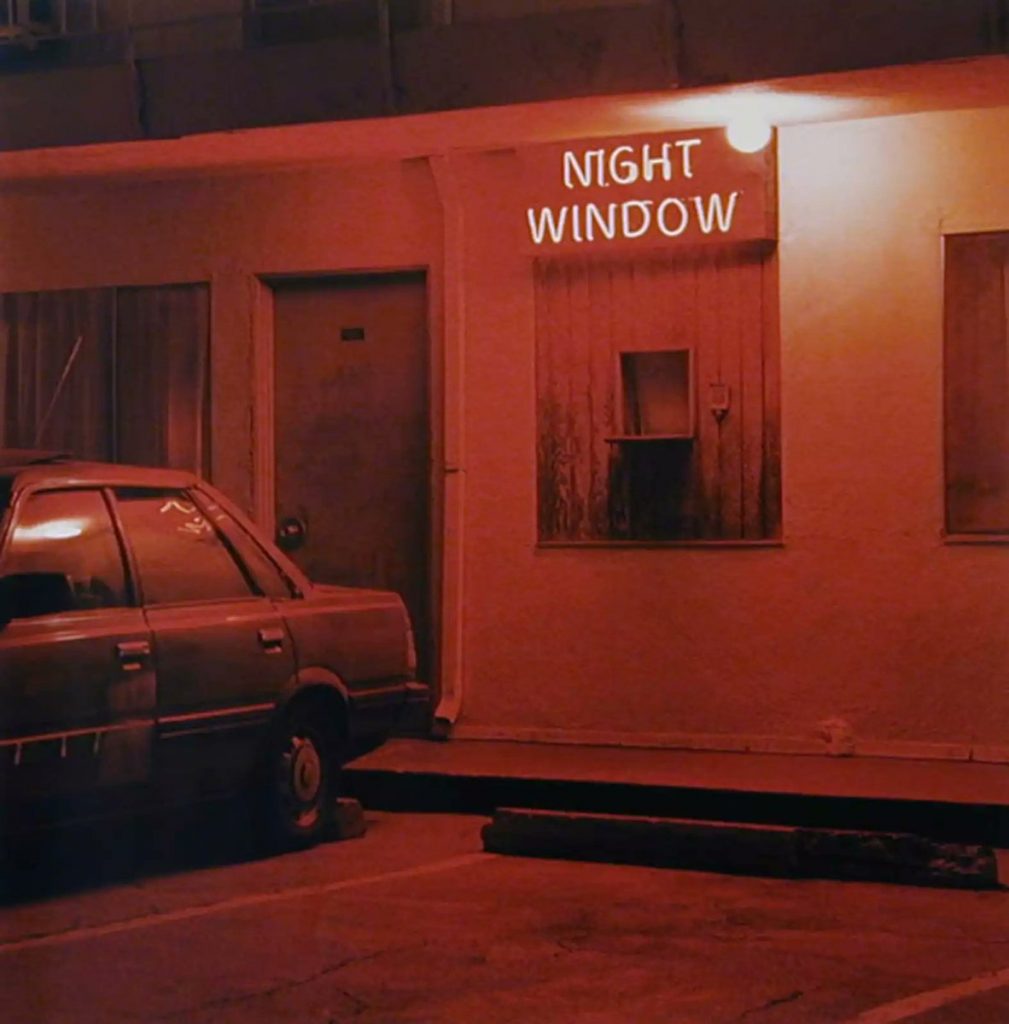
Jeff Brouws | Night Window, Los Angeles, California, 2000
December 29, 2023Jeff Brouws | Night Window, Los Angeles, California, 2000
In the Far West, where Brigham Young ended up and I started from, they tell stories about hoop snakes.
When a hoop snake wants to get somewhere—whether because the hoop snake is after something, or because something is after the hoop snake—it takes its tail (which may or may not have rattles on it) into its mouth, thus forming itself into a hoop, and rolls.
Jehovah enjoined snakes to crawl on their belly in the dust, but Jehovah was an Easterner. Rolling along, bowling along, is a lot quicker and more satisfying than crawling. But, for the hoop snakes with rattles, there is a drawback. They are venomous snakes, and when they bite their own tail they die, in awful agony, of snakebite. All progress has these hitches. I don’t know what the moral is. It may be in the end safest to lie perfectly still without even crawling. Indeed it’s certain that we shall all do so in the end, which has nothing else after it. But then no tracks are left in the dust, no lines drawn; the dark and stormy nights are all one with the sweet bright days, this moment of June—and you might as well never have lived at all.
(Ursula K. Le Guin, from her essay It was a dark and stormy nigh ; or, why are we huddling about the campfire?, 1979)
A number of the images that I share in the main page for this post are also from Brouws’ American West series (1990 – 1993) and the Highway | Approaching Nowhere series. Many of Brouws’ series seem to bleed into each other, or one body of work grows into the next in a manner that does not so much interrupt his ideas as expand them.
I have a certain affinity for abandoned and derelict spaces. I do live in the rust belt wonderland of Niagara, and before that a similar zone in Windsor and Detroit (hence my appreciation of Dave Jordano‘s fine photographs), and my time on the Canadian prairies (with ghost towns in ‘next year’s country’, as captured eerily and evocatively by Danny Singer, for example) fed that interest in an overlapping manner. Brouws’ aesthetic is akin to some past Curator’s Picks I’ve featured : The Great Texas Road Story perhaps being the most immediately similar. But Brouws’ works are less despairing, with the frequency of the neon inviting glow amidst the wastelands, but like many other artists whose work I’ve featured, historical and social themes and concerns are informed by, and informing, his scenes.
“Feelings of isolation colour my photographs – that’s what you’re sensing. It’s fascinating: what’s in your mind, heart and soul gets telegraphed onto the film plane and embedded in the photograph. It can’t be avoided.”
From the Robert Koch Gallery :
“Jeff Brouws photographically explores the American cultural landscape in its myriad of facets. A self-described “visual anthropologist” with a camera, Jeff Brouws utilizes a constructed narrative and typological approach in the making of his work. Over a span of thirty plus years, Brouws has employed a diversity of themes in his work: the American highway, the franchised landscape, deindustrialized inner city zones, as well as riffing on and re-examining bodies of work by luminary artists such as Ed Ruscha, and Bernd and Hilla Becher. Brouws captures the unique cultural experience of Americana and its iconography, visually documenting a vibrant travelogue through the half-experienced, half-remembered landscape of America’s fading culture. Directing his lens toward these temporary obsolete and abandoned sites of American consciousness, he powerfully transforms images of history and dereliction into contemplative and at times humorous commentary on the collective and expressive experience of the American landscape.”
An insightful conversation with the artist can be enjoyed here. When I first encountered Brouws’ work – the primary image in this essay Night Window, Los Angeles, California, 2000 – the quote from Le Guin that opens this meditation on his work came immediately to mind. It’s all about telling stories, some of which are quieter than others, some of which are on the verge of being forgotten and some that we may never have considered. The term ‘into the west’ has connotations both positive and negative, but that is just life, and history, and Brouws’ images encapsulate all these contradictions with an eye for beauty in what might be banal, but definitely resonates with the viewer on multiple levels.
~ Bart Gazzola
Read More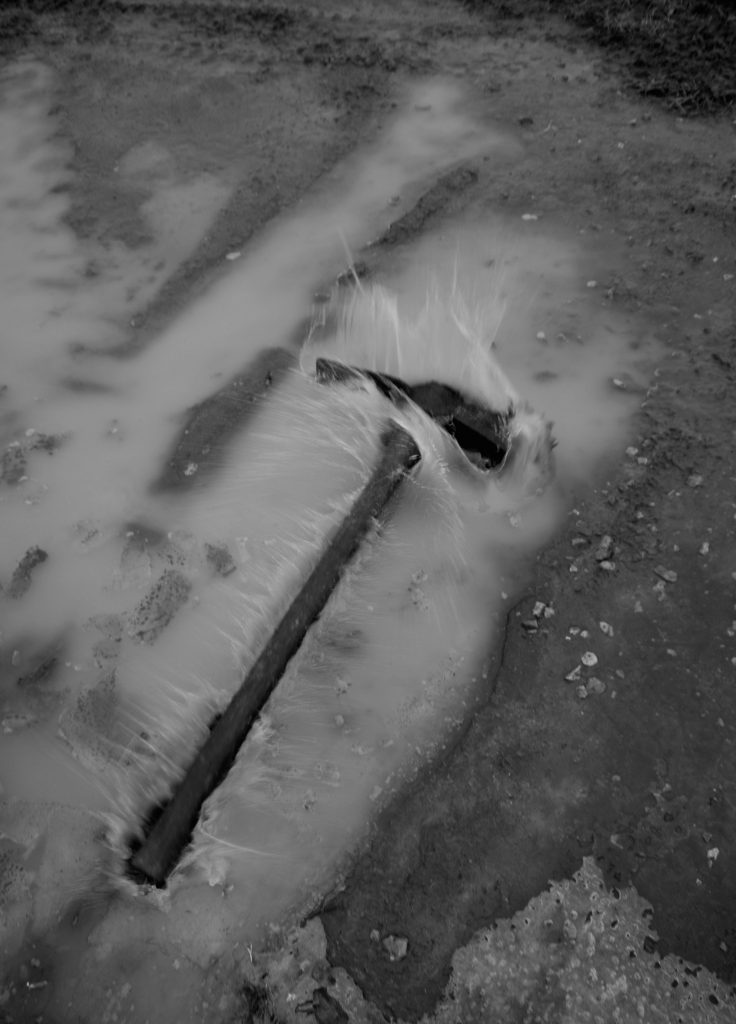
Adrianna Ault & Raymond Meeks | Ohio Farm Auction
December 11, 2023Adrianna Ault & Raymond Meeks | Ohio Farm Auction
The crops we grew last summer weren’t enough to pay the loans
Couldn’t buy the seed to plant this spring and the Farmers’ Bank foreclosed
Called my old friend Schepman up, to auction off the land
He said, “John it’s just my job and I hope you understand”
Hey, calling it your job ol’ hoss, sure don’t make it right
But if you want me to I’ll say a prayer for your soul tonight
(John Mellencamp, Rain on the Scarecrow)
One generation passeth away, and another generation cometh: but the earth abideth for ever. (Ecclesiastes 1:4, KJV)
There’s a memento mori quality to the scenes from the Ohio Farm Auction series. This may be an interpretation informed by several of the other bodies of work by Adrianna Ault (such as her series Levee which led me to the collaborative Ohio Farm Auction series), that are permeated by a sense of mortality and remembrance, as expressed in her writings about those images.
Though these images are not completely empty of people, the more striking and – unsurprisingly – starker moments that stay with you have no figures within them, though their absence and implication is powerful. The line I quote above, in response to this work came to mind immediately upon seeing the Township photos. Mellencamp’s album was a series of laments for a way of life lost (perhaps taken away or relinquished), as the world moves on (this last being closest, I feel, to the artists’ position here, with a gentle consideration of family history and generational change. Township reads more about releasing than resistance..)
The biblical quote came to me in a more indirect manner. Having recently read George Stewart’s post apocalyptic book Earth Abides (from 1949, so it ages poorly, in many ways – or this is perhaps a corolary to the ‘change’ implicit in the story presented in Ohio Farm Auction, of a time to gather and a time to discard), the ideas, again, of what is lost and our – humanity’s – place in the larger narrative of the earth was a further consideration when I engaged with these photographs…
The words of Adrianna Ault, speaking of this collaboration with Meeks (one of a number they’ve done) :
“These photographs were taken one February day in a rural township in Ohio. My partner, Raymond Meeks, and I photographed and watched as all the possessions of my family’s farm was auctioned to the highest bidder. Photographing served as a testimony to the life and work of over one hundred years of farming in my family. This work was published as a collaboration with Tim Carpenter and Brad Zellar in the book Township published by TIS books and later nominated for the 2018 Kassel Fotobookfestival Award.”
That collection of words and photographs has been described as a “careful deliberation on transience and the ultimate meaning of a way of life in the Midwest.”
More of Ault’s work can be seen here and more of Meek’s work can be seen here.
~ Bart Gazzola
Read More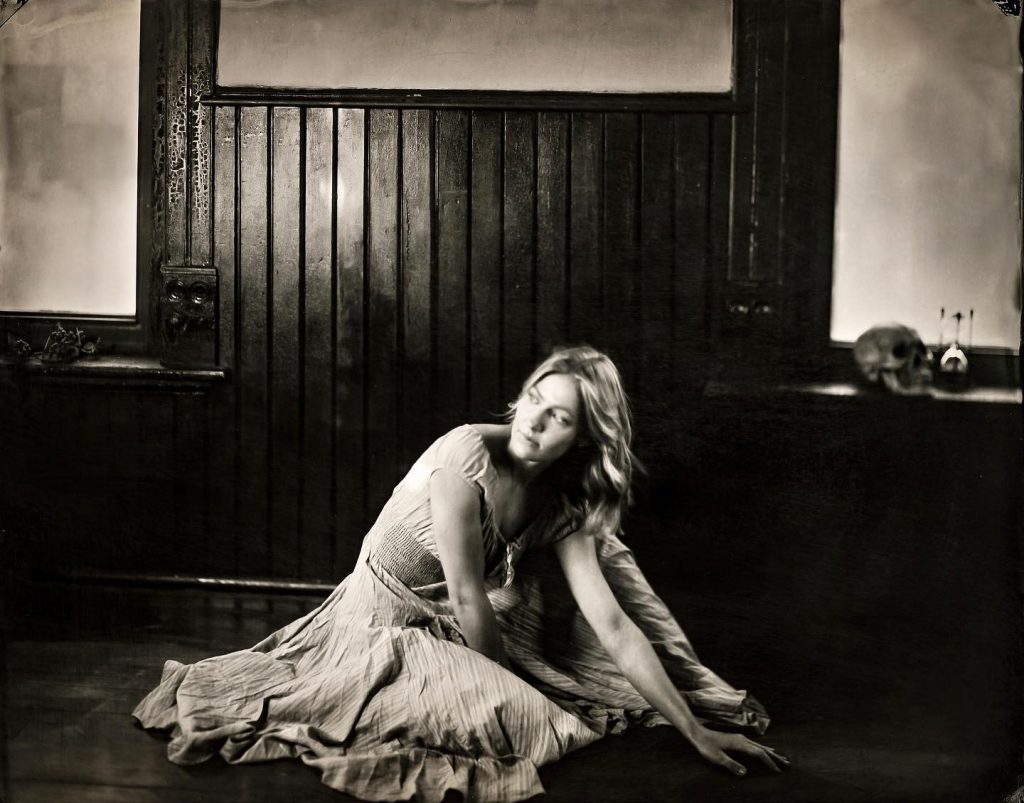
Kary Janousek – Connecting to History
March 11, 2022Kary Janousek Connecting to History Wind - Kary Janousek Kary Janousek is a prairie transplant. She found herself living in Fargo,... Read More

Liz Potter – Reference
January 11, 2022Liz Potter Reference The Power of this Land - Liz Potter Liz Potter has a big personality that is inversely reflected... Read More
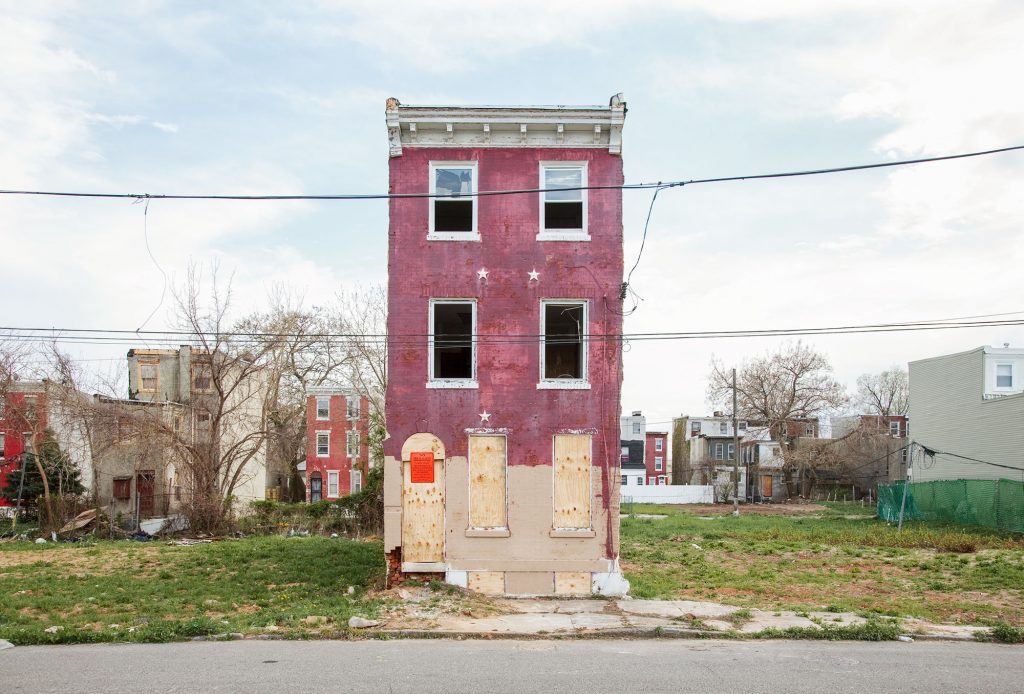
Philadelphia, PA, 2013 from Last House Standing by Ben Marcin
October 10, 2021
Philadelphia, PA, 2013 from Last House Standing by Ben Marcin
I spent a significant part of my formative years in the Windsor – Detroit area. When I visited Detroit, stepping outside of the immediate downtown into the areas that still bore the scars of history, I was often struck by singular houses – occupied or not, officially or otherwise – that stood like sentinels, like final gatekeepers, of areas that were empty and desolate. At that time, living near the Ambassador Bridge in Canada, the neighbourhood was picturesque and somewhat historic if a bit leaning towards dereliction: now, nearly three decades later, that section of Windsor is rife with shuttered houses, boarded up and abandoned.
Ben Marcin’s Last House Standing series is literally that: singular buildings, from Baltimore, New Jersey or – like this image – Philadelphia. These are all places with equally iconic stature as Detroit, and Marcin’s ‘figures’ alternately evoke gravestones or lone survivors, barely holding on, amidst the wastelands that have crept and grown up around them. Many seem like tombs; others bring an incongruous element of vitality with their vibrant colours, evoking T.S. Eliot’s ‘these fragments I have shored against my ruins’ (appropriately from his opus, The Wasteland).
Marcin also revisits sites. Thus, buildings that were barely holding on in 2011 are now gone, like they’ve never been, in 2020.
More of this series by Marcin can be seen here, at his site, or at his Instagram. ~ Bart Gazzola
Read More
Fire Caught and Portrait of an Artist (Franklin Ugochukwu) – Kary Janousek
September 7, 2021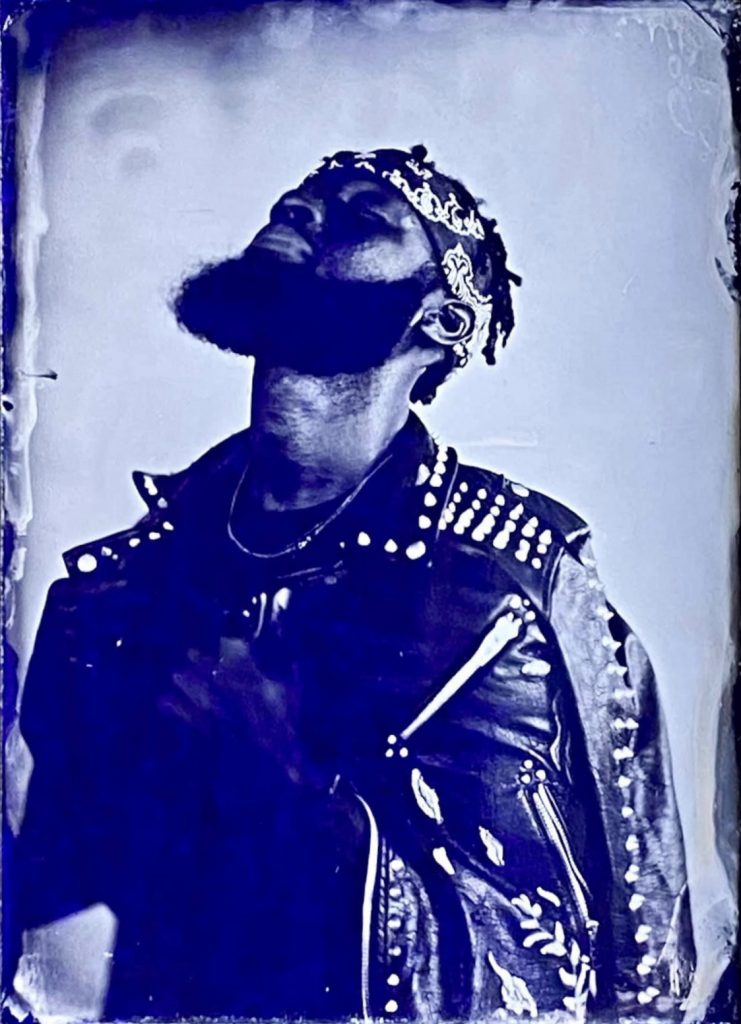
There is an ethereal look to wet plate collodion photography that is difficult to describe. It’s no wonder that people thought that early photography was a method to steal the soul of the sitter; as you can recognize the individual, but they look detached, disconnected. The camera seems to catch something more than just the image of the person… it catches their essence.
The reason for this is that these images are primarily formed by collecting the UV light radiating from the subject, a light that is invisible to the naked eye. Kary Janousek (one of 4 of the “Dakota Revivalist Photographers” using wet plate collodion in North Dakota) uses this effect to beautiful ends. Fire Caught and Portrait of an Artist (Franklin Ugochukwu) are perfect examples of the process. Many of Kary’s images have spiritual undertones that are served well by the detachment. The images are of flesh and blood seem to transcend the glass plates they are formed on.
Based in Fargo, North Dakota, Kary is likely one of the only wet plate photographers ANYWHERE with a store front enterprise… walk in to her incredible studio in the historic center of town and you can have a plate made on the spot! Recently she has started experimenting with different types of glass, creating completely unique works of art.
You can find Kary Janousek at https://highhatportraiture.com and on IG @highhatportraiture
Shane Balkowitsch is another of the Dakota Revivalist Photographers and has been previously featured on curated.
~ Mark Walton
Read More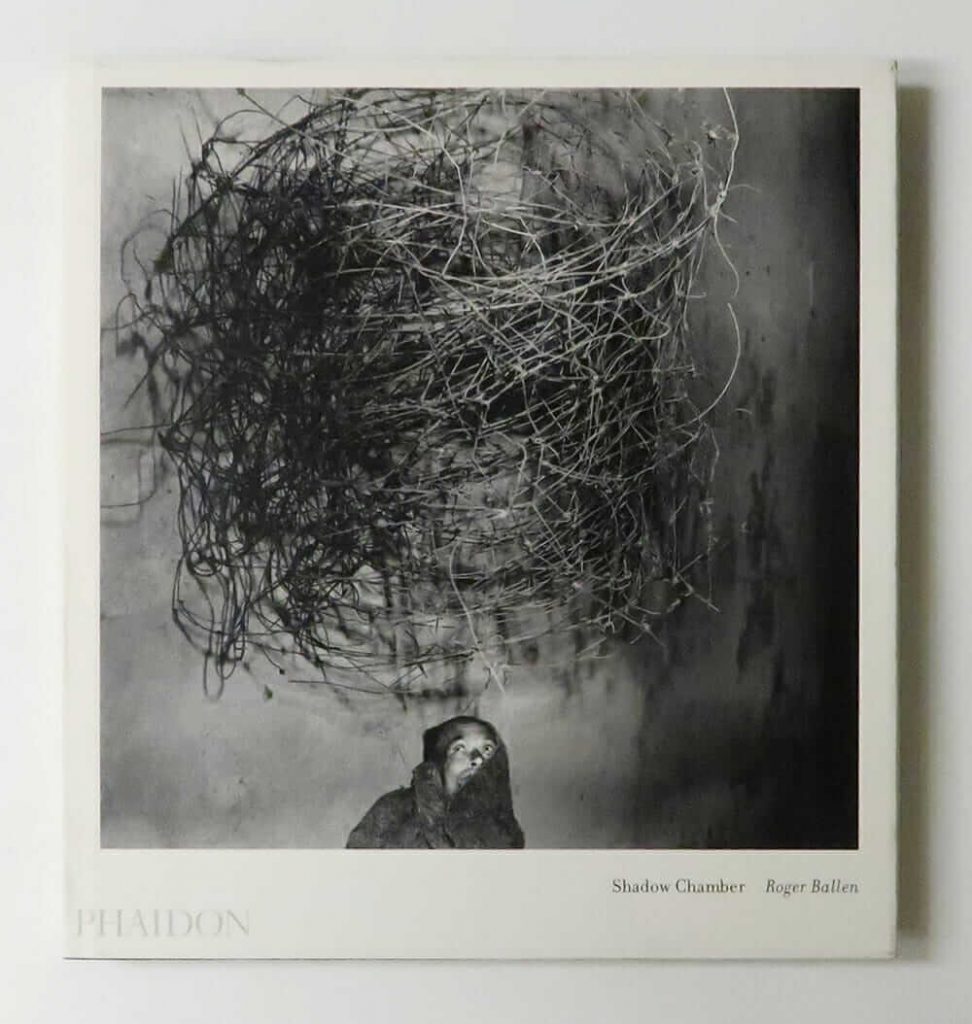
Shadow Chamber
April 20, 2021Roger Ballen, Phaidon Press, 2005
I’ve been familiar with Roger Ballen’s work for several years: the direct yet unsettling images bring to mind the works of Eugene Meatyard or Diane Arbus, and with hints of a performative macabre that goes beyond those two, and perhaps edges up against Joel Peter Witkin (but with less demonstrably ‘freaky’ and more subtle, and thus more pervasive, characters and settings that are more disturbing in their supposed banality) . In an introductory text to this wonderful collection of Ballen’s photographs, Robert A Sobieszek offers the following: “To discern fact from fiction in this work may be simply impossible; to tell acting from real life may also be; to bother with such discernment may not be only futile but missing the point.” I’d argue that Ballen’s work is a glimpse of the very real, and it’s stark and unflinching. A good introduction to this prolific artist’s aesthetic.
~ Bart Gazzola
Read More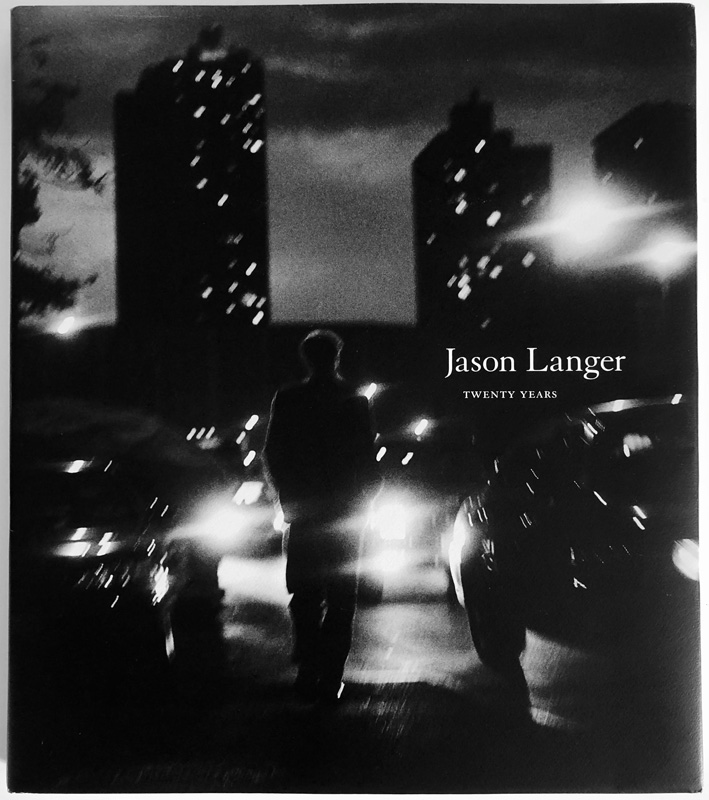
Jason Langer : Twenty Years
April 30, 2021Published by Radius Books, 2015 www.radiusbooks.org
Also available through D.A.P. at www.artbook.com
Jason Langer was born in 1967 in Tucson, Arizona and raised in Ashland, Oregon. He has been making
photographs since 1980, and has published two monographs through Nazraeli Press.
Twenty Years represents Jason’s first mid- career anthology of work. This collection of tightly edited
monochromes bristles with tension and mystery, with many of the images made in the unaffected dark
of night. Langer deftly employs high contrast for its evocative qualities, dominating the light spectrum
with inky blacks. Tight framing of subjects intensifies the composition, and his judicious use of blur gives
the viewer the sense of being present alongside, in the moment.
Langer now lives and works in Portland, Oregon.
http://www.jasonlanger.com/
IG: @jlangerphotos
~ Peppa Martin
Read More
Recent Comments